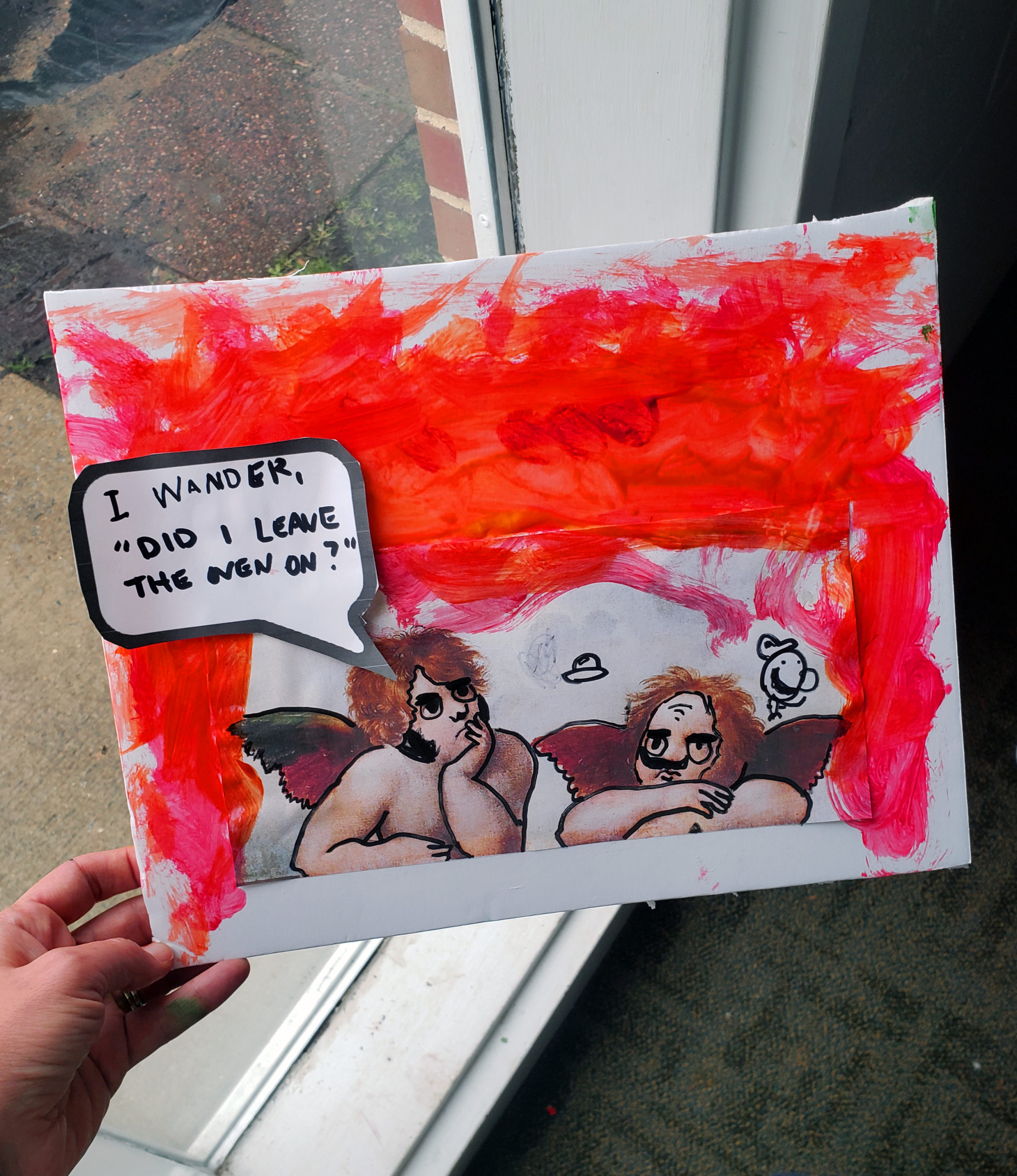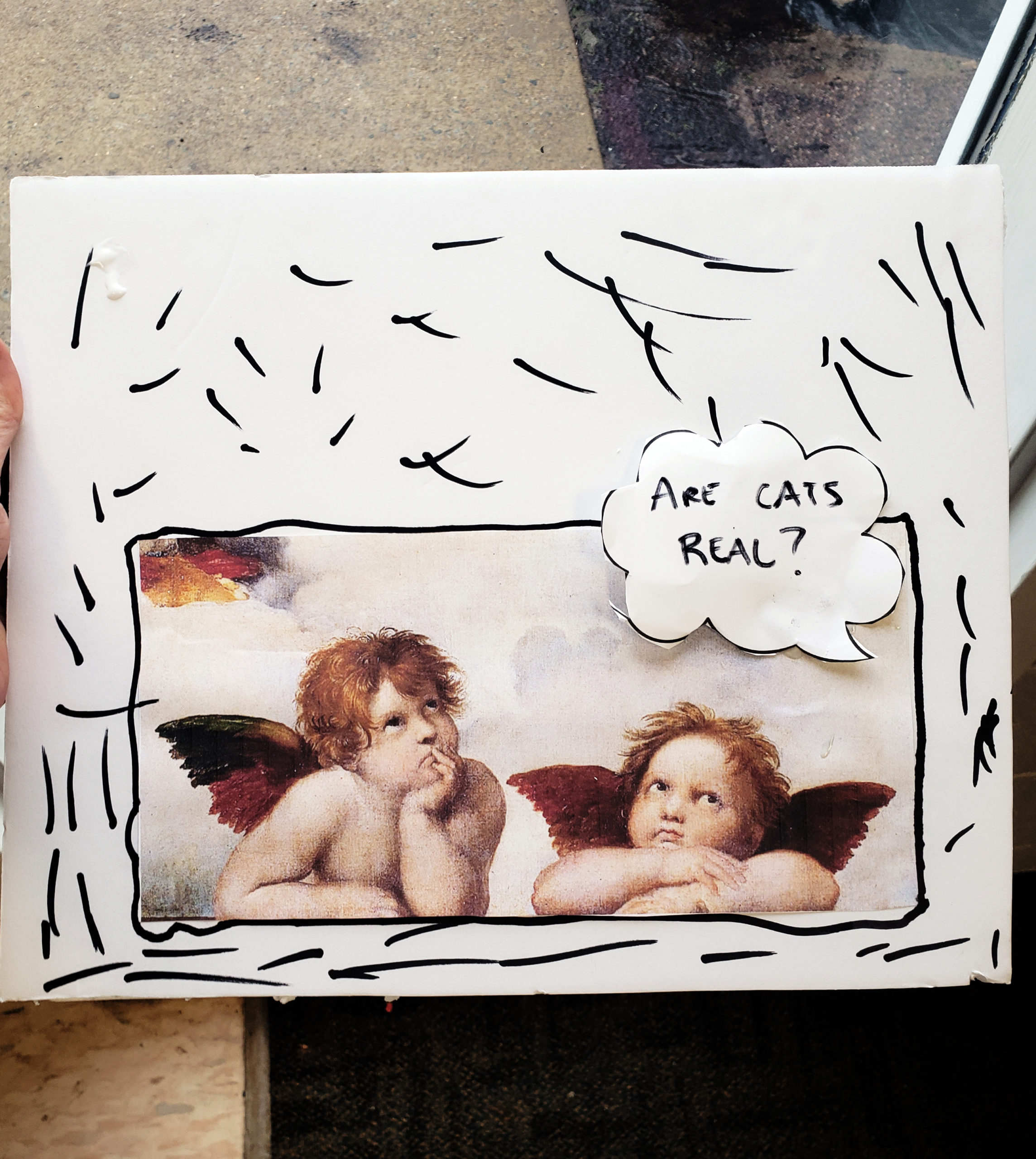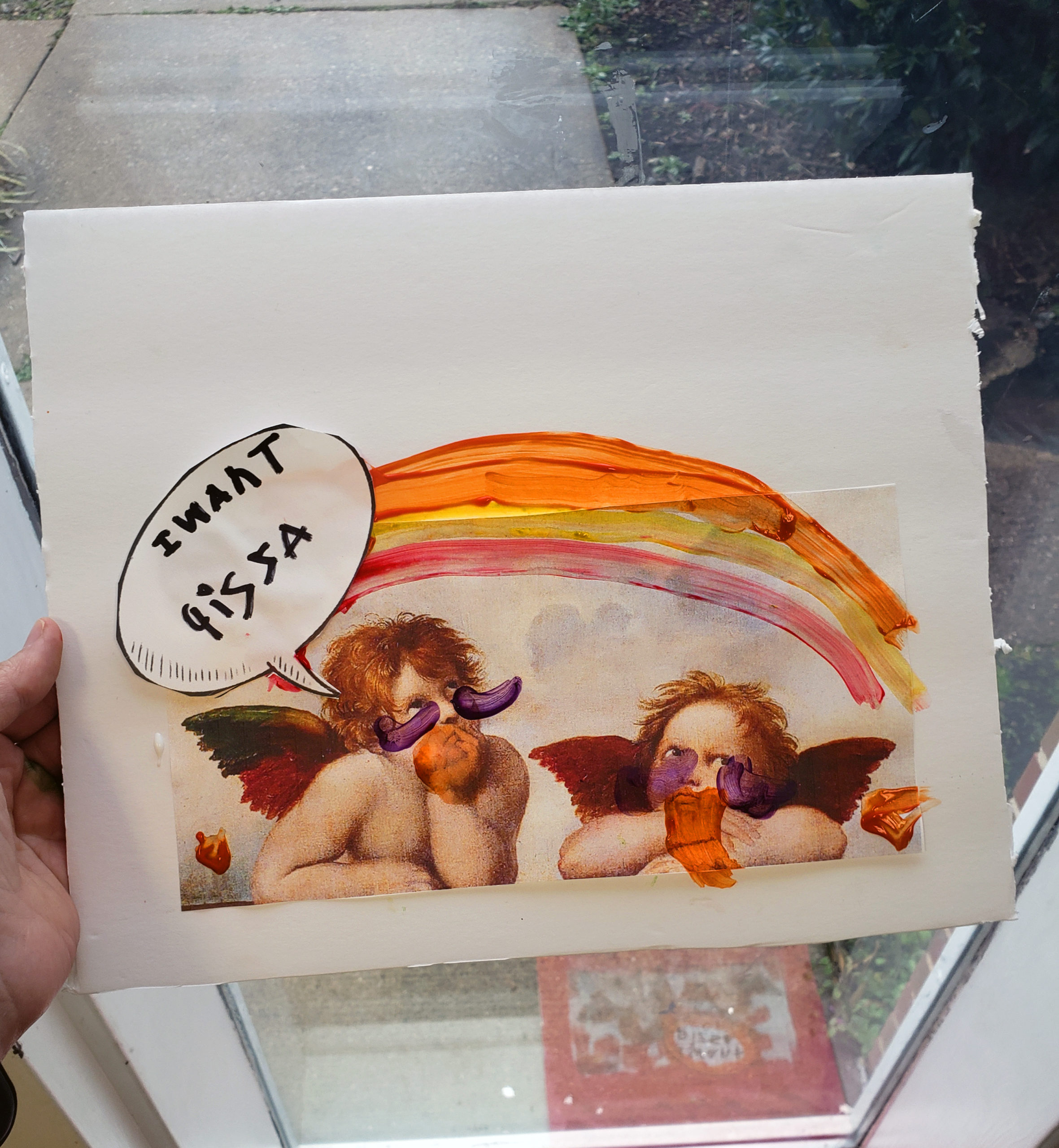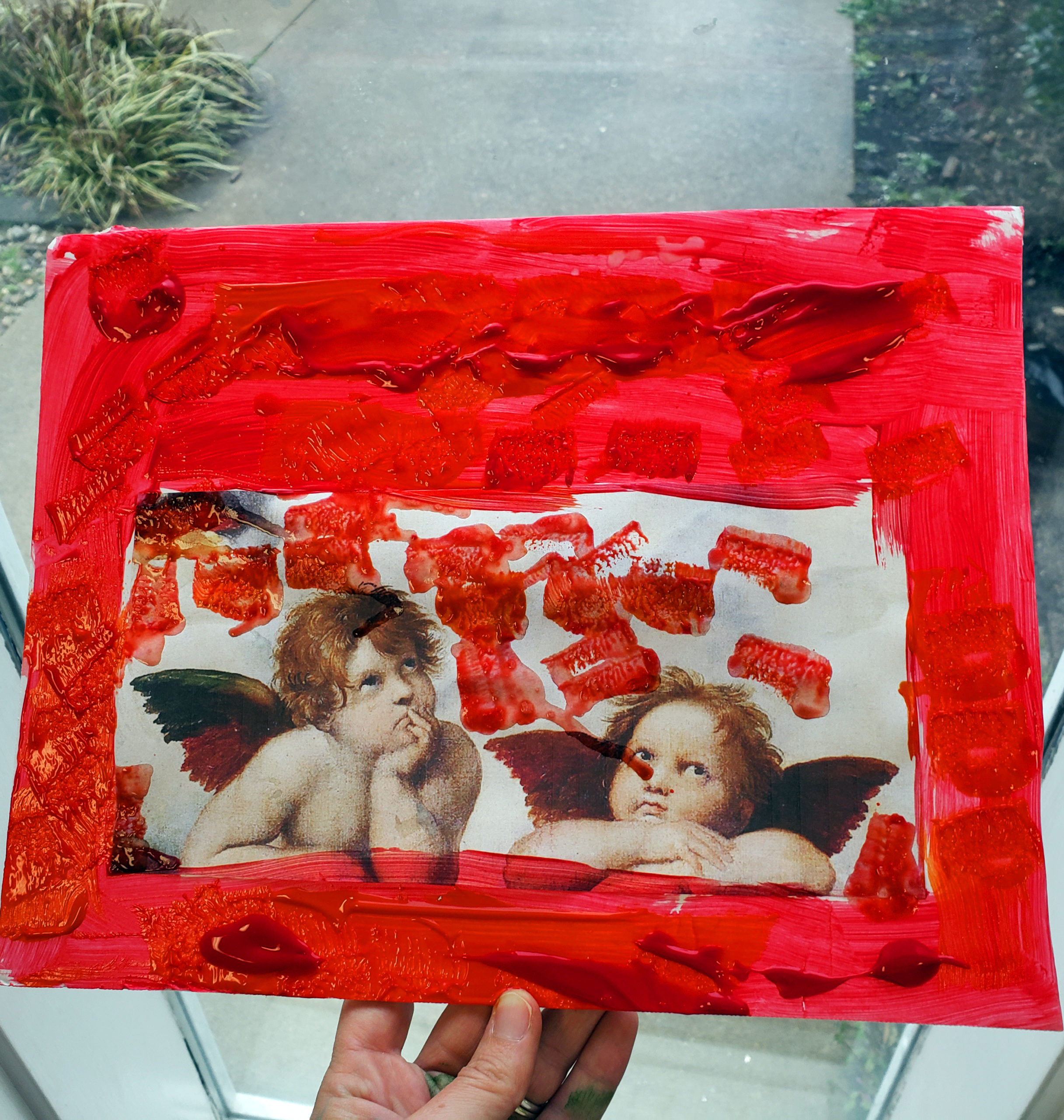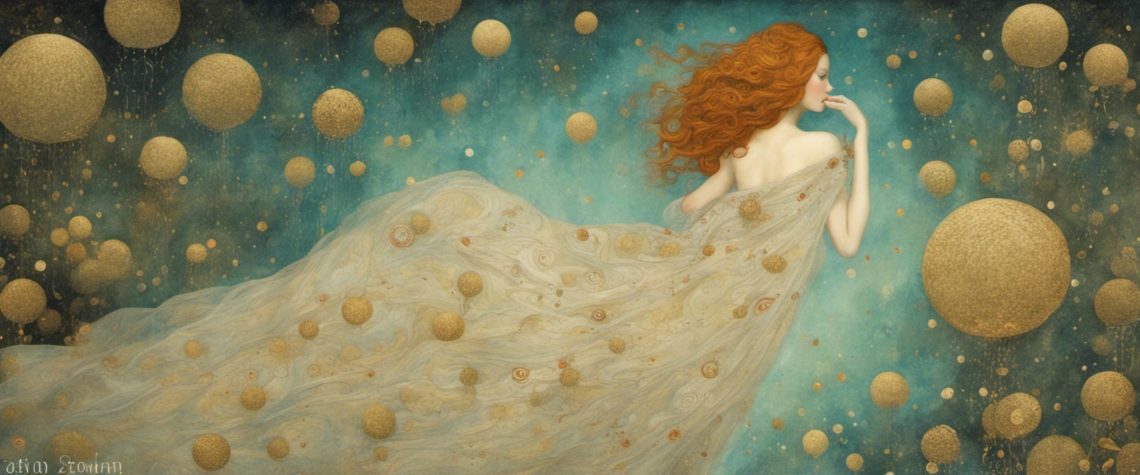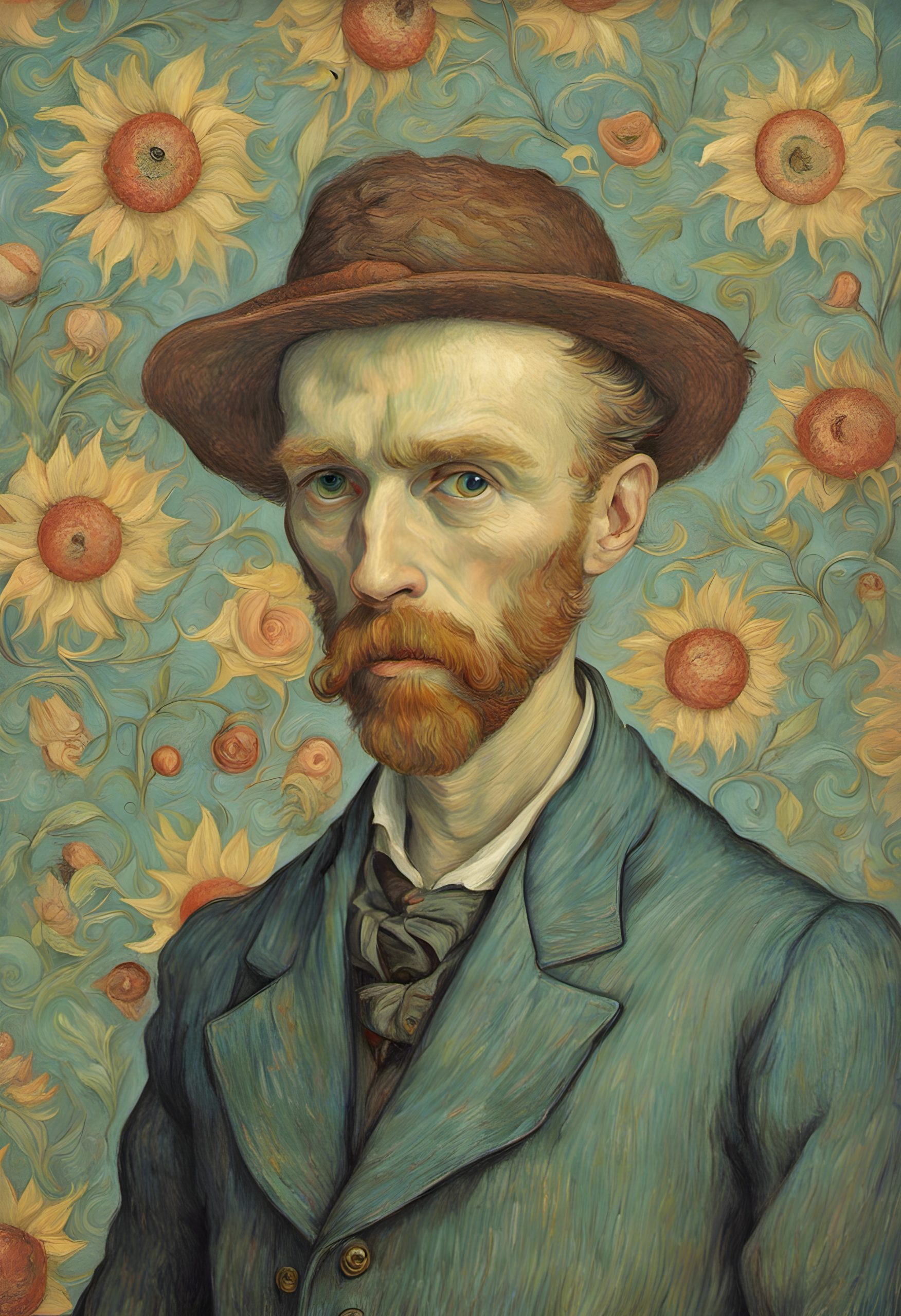This Raphael art history lesson for kids is a lovely, fun, clever introduction to the Renaissance masters.
Raphael: A Renaissance Maestro
Who was Raphael?
Raffaello Sanzio da Urbino, commonly known as Raphael, was an Italian painter and architect of the High Renaissance. Born on April 6, 1483, in Urbino, Italy, Raphael grew up in an artistic environment.
His father, Giovanni Santi, was a court painter, and Raphael inherited a natural talent for art. Tragically, his mother died when he was eight, and his father passed away when he was only 11, leaving him orphaned.
Raphael’s artistic journey began with apprenticeships under the guidance of influential painters in Urbino. However, recognizing the need for further growth, he moved to Perugia and later Florence, absorbing the groundbreaking ideas of the Renaissance.
In Florence, he studied the works of Leonardo da Vinci and Michelangelo, fostering an appreciation for anatomy, perspective, and the human form.
Key Vocabulary Terms
Chiaroscuro: Chiaroscuro is an artistic technique that uses strong contrasts between light and dark to create a sense of volume and three-dimensionality in two-dimensional works of art. It emerged during the Renaissance and is often associated with artists like Leonardo da Vinci and Caravaggio. The term itself is Italian, combining “chiaro,” meaning light, and “scuro,” meaning dark.
The Renaissance: The Renaissance was a cultural, artistic, and intellectual movement that spanned roughly the 14th to the 17th century in Europe. It marked a revival of interest in classical art, literature, and learning, leading to significant advancements in various fields such as science, philosophy, and the arts.
Urbino, Italy: Urbino is a historic city in central Italy. It played a prominent role during the Renaissance and was the birthplace of notable figures like Raphael. Urbino is renowned for its well-preserved Renaissance architecture and was a center of cultural and artistic activity during that period.
Court Painter: A court painter is an artist who is officially employed by a royal or noble court to create artworks, often portraits of the monarch, their family, and other notable figures. Court painters enjoyed prestige, financial support, and the opportunity to influence artistic trends within the courtly environment.
Apprenticeships: Apprenticeships refer to a traditional method of learning a trade or skill, typically in crafts and trades such as painting, carpentry, or blacksmithing. An apprentice works under the guidance of a skilled master or mentor to acquire practical experience and knowledge in the chosen craft. It involves a period of training, during which the apprentice learns the techniques and secrets of the trade before becoming a journeyman or master themselves.
Raphael’s Most Kid-Friendly Art
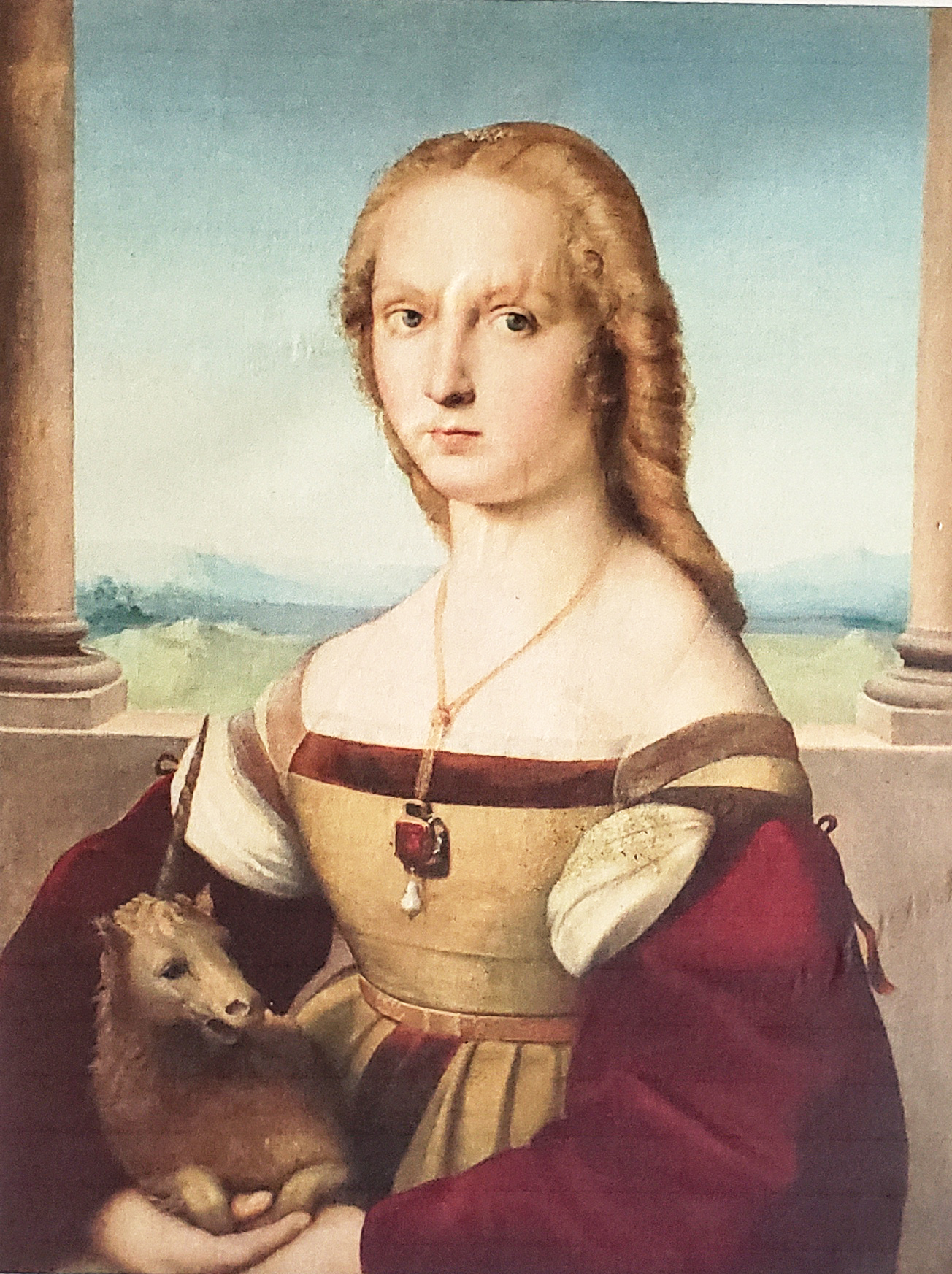
There are a few pieces I always use when teaching about Raphae.
The first is Two Cherubs (see below), which is the piece I based our Rapheal art history lesson on.
And then there is Young Woman with Unicorn (see above).
While a lot of Renaissance art can be rather heavy and dark, kids love unicorns! You can count on it. (And if you want a full project on unicorns, check out this one on the Unicorn Tapestries from the Medieval period).
Style and Techniques
Raphael’s distinctive style is characterized by a harmonious blend of classical influences, innovative techniques, and emotional depth.
His use of chiaroscuro, a technique that emphasizes the contrast between light and shadow, added depth and dimension to his paintings. His attention to detail, coupled with a keen understanding of perspective, created realistic and visually engaging compositions.
“The School of Athens” is a prime example of Raphael’s mastery. The painting features a gathering of great philosophers and thinkers from different periods, creating a visual metaphor for the synthesis of classical knowledge. The intricate architecture, the play of light, and the careful depiction of each figure reveal Raphael’s technical prowess and intellectual depth.
Raphael’s Two Cherubs
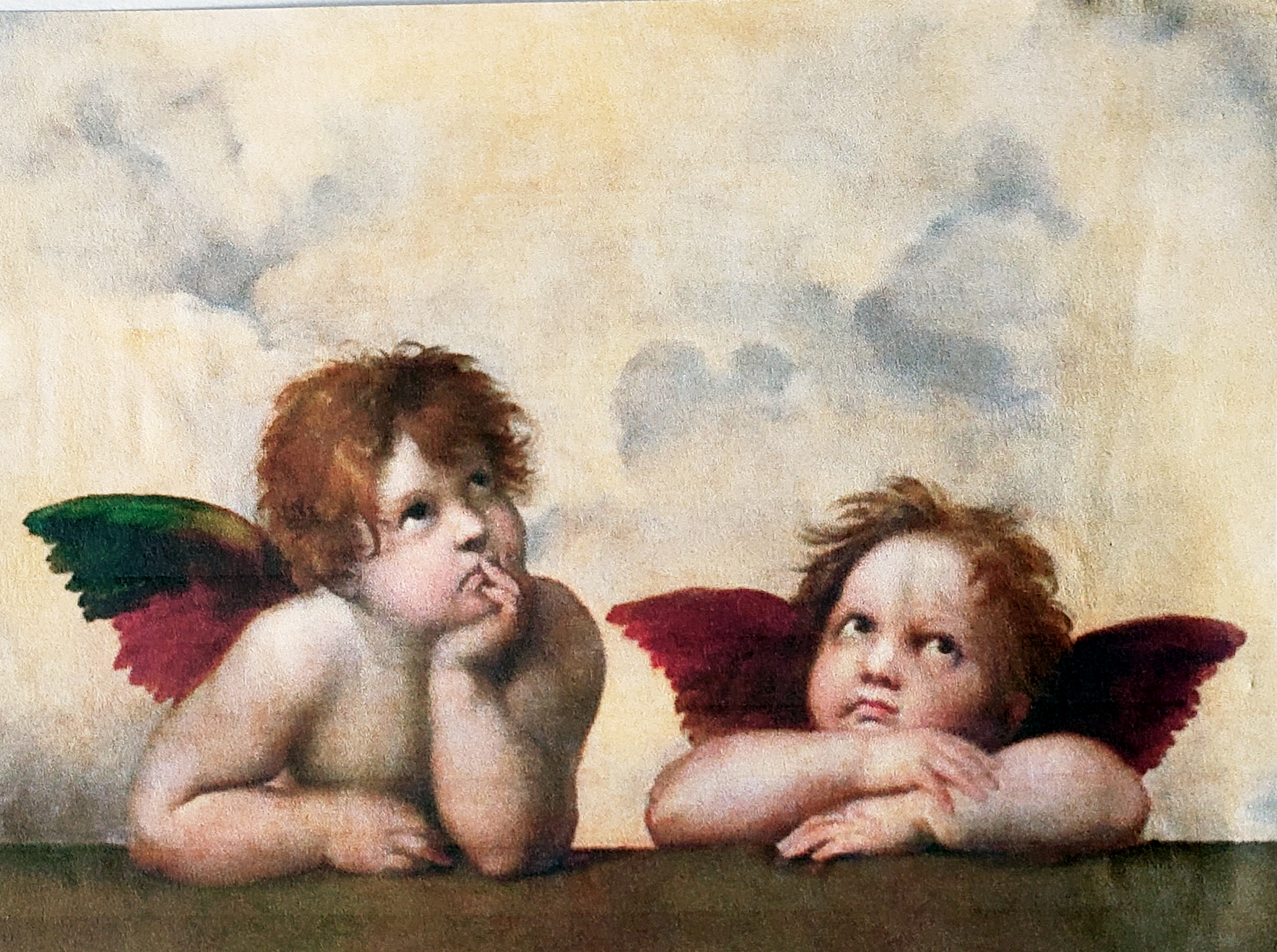
Raphael’s two cherubs, famously depicted in his masterpiece “The Sistine Madonna,” are renowned for their ethereal beauty and tender expression.
These celestial beings embody innocence and grace. Positioned at the bottom of the painting, they add a poignant touch to the overall composition. The cherubs’ delicate features and serene countenances capture the essence of divine purity.
Raphael’s meticulous attention to detail, from the softness of their rosy cheeks to the intricacies of their feathered wings, elevates these cherubs to iconic status in art history. Their timeless presence continues to captivate viewers with a sense of celestial wonder.
Raphael Art History Project for Kids: What Were Raphael’s Cherubs Thinking?
I love this project idea for our Raphael art history lesson for kids!
It’s a mixed-media approach that encourages them to be creative with both fine art and language.
Materials
-Posterboard
-Glue
-Printouts of Raphaels’ Two Cherubs
-Printouts of “thought bubbles”
–optional: dried flowers, glitter, odds and ends, ect
Step 1
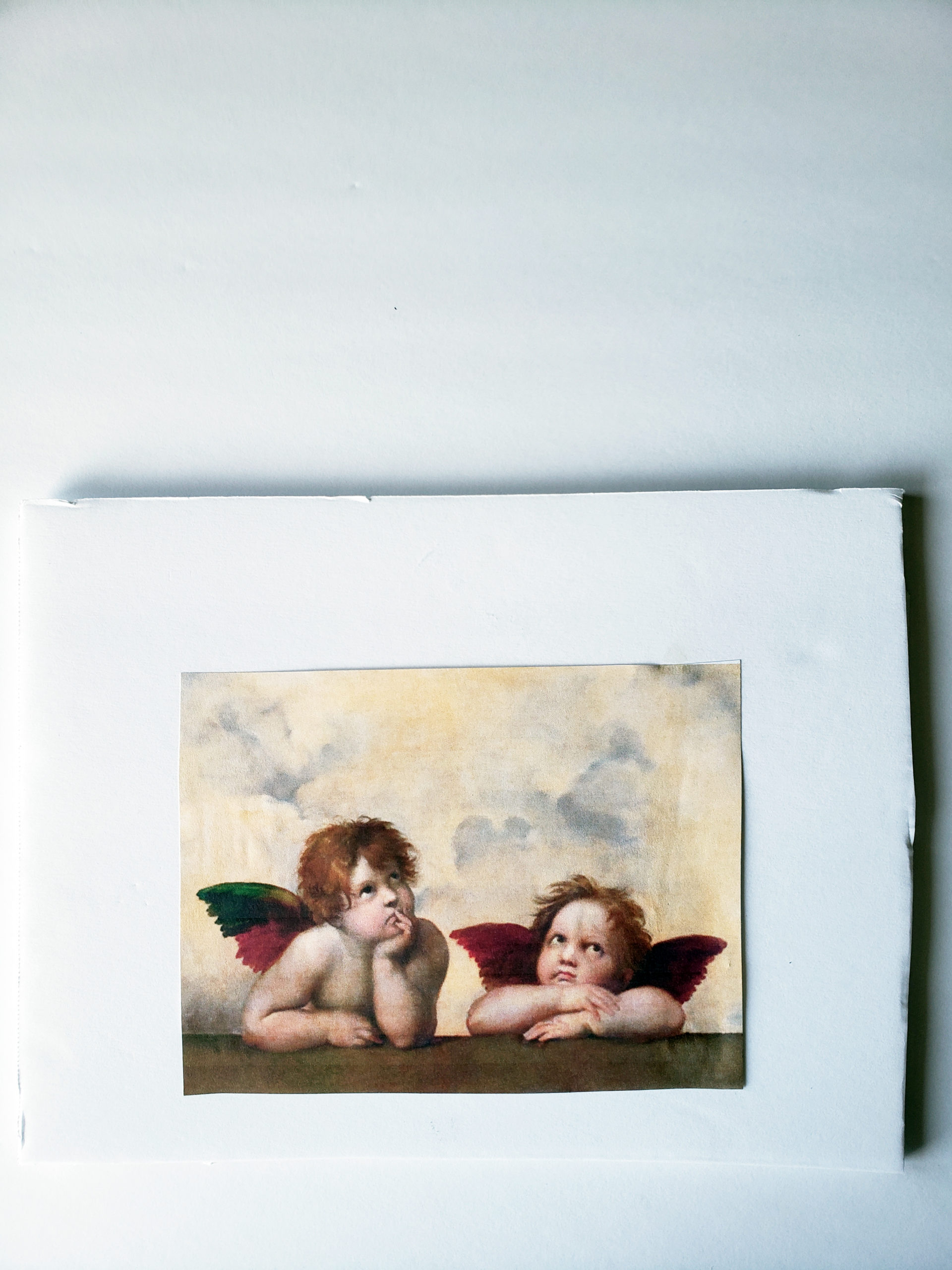
Mount the print of Raphael’s Two Cherubs on posterboard.
Step 2
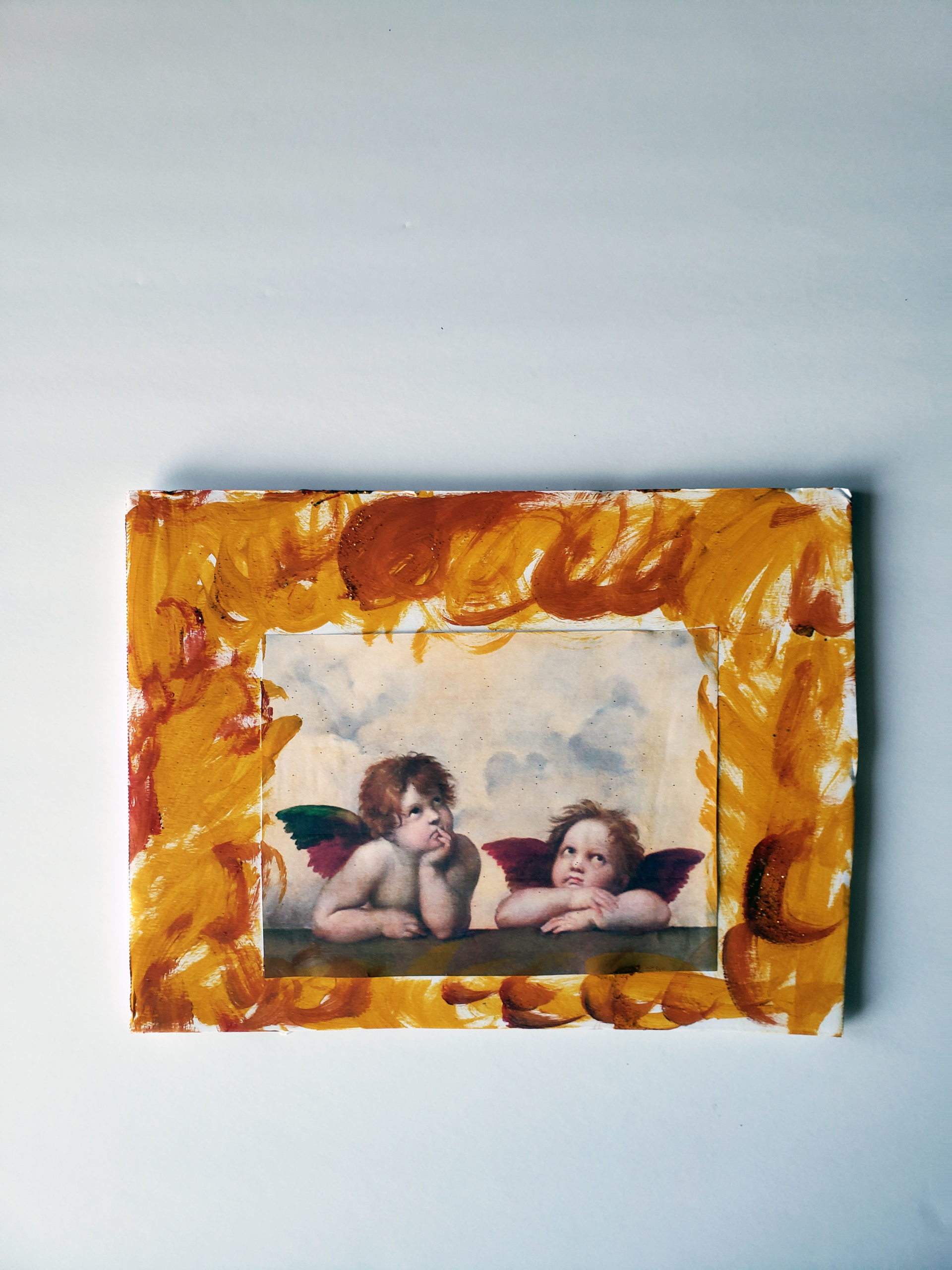
Decorate the outside margins any way you want. You can use paint, glue, glitter, silk flowers, ect.
Step 3
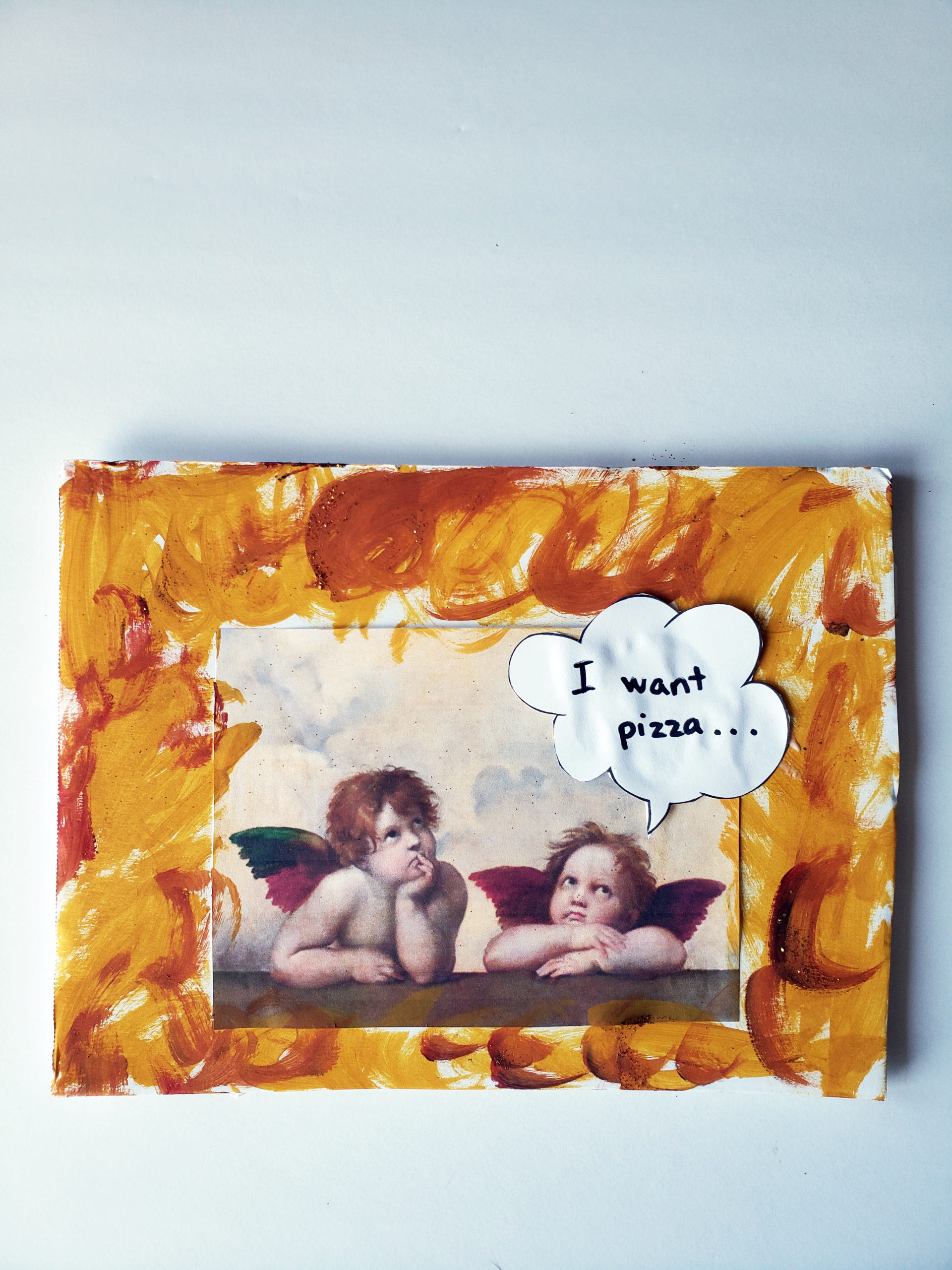
Cut out the thought bubble and write your creative take on what you think the cherubs are thinking. Glue it to the poster board.
Examples From Real Kids
Here are some examples from my elementary art history class. The kids ran with their inspiration! They came out so cute, and funny.
